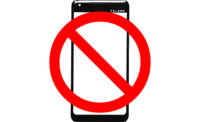Manufacturing News
Talking outside the box: Are we connected yet?
The industrial "internet of things" is close at hand—or already here.

The Industrial Internet of Things enables new business models. (From “Planning for the Industrial Internet of Things,” ARC Advisory Group, www.arcweb.com.)
The recent ARC Industry Forum, held in Orlando FL, described an “industrial Internet of Things” (IoT) as being close at hand. In fact, many of the technologies are already here, but some still need work to provide the services and security industrial operations need.
According to ARC’s paper, “Planning for the Industrial Internet of Things,” “Techniques for adding IoT’s ‘digital umbilical cord’ to existing industrial systems are coming to market. What’s lacking is broad recognition of what has become possible, and the vision to utilize these new technologies to transform industry.”
IoT technology as applied to industrial equipment is comprised of several components: intelligent sensors, machines, devices and assets; communications; analytics; and visualization. Controllers, machines, pumps, transmitters, valves and many more industrial devices will be able to communicate via wired, wireless, cellular, satellite and other networks. And with the IPv6’s (Internet Protocol version 6) almost boundless address spaces, all these devices will now be able to have their own unique IP addresses on the Internet.
With the new networking technologies, one automation challenge is neither new nor unique: Will all these new embedded devices actually talk with one another when they’re made by different suppliers? Since the days of the “field bus wars,” this has been an ongoing issue. Bryan Griffen, Nestlé manager of electrical and automation engineering, explained in his talk, “The Automation Challenge,” that suppliers can embed as many high-tech features and functionalities as they want inside their devices, but their devices must be able to talk “outside the box” to controllers and devices made by a different supplier.
For example, owners of Samsung Galaxy smartphones can place calls and talk to owners of iPhones, even though each phone has its own unique set of features. But industrial devices on different suppliers’ “standard” automation networks don’t communicate with each other. “PROFINET is a standard. Can everyone use it? No. EtherNet/IP is a standard, but can everybody use it? Well, no. The same is true for EtherCAT,” says Griffen.
What Griffen wants is a communication channel between two machines using different network architectures that work together—without having to figure out all the different protocols and responses. “Just send the information that’s necessary to improve my manufacturing systems,” says Griffen.
All the digital field devices today are great at collecting and exporting “big data.” And repositories are great at saving it. The problem is, according to Griffen, this big data isn’t very useful. “We need to focus on data management. We need information, not data. With all the connectivity today, there are millions of data points we can get. They just flood the operator.”
Plus, HMIs are baffling. “The operator interface looks like a Christmas tree. There are flashing lights all over; there are pop-ups on top of pop-ups, and the operator doesn’t see what’s critical in the process,” adds Griffen. With events and alarms, it’s even worse. They become meaningless because there are so many of them. “Operators just walk over to the alarm screen and hit ‘Acknowledge All’ without even looking. They just don’t have the time to figure out what all this data means.”
But IoT technology has the ability to save a lot of time and money for processors, and some suppliers and machine builders are catching on. Griffen describes a scenario many people with smartphones are familiar with: finding restaurants or stores offering products by scanning a QR code. “It would be nice if I could scan a code on a [controller or machine part], and the resulting information would tell me how to troubleshoot and configure it. Or even better, it could use my location services to figure out what plant I’m in, locate a distributor, check the distributor’s inventory, ask if I want to buy that part and let me know if the part could be dropped off in 45 minutes, or there will be a three-week delivery.”
Mobile messaging is another great application, and it’s getting better. Today, a maintenance person responding to a machine breakdown may already know what to expect because the machine sent troubleshooting information along with the message. Even better, the machine diagnoses its own problem, and tells and shows a new technician how to fix it.
Looking for a reprint of this article?
From high-res PDFs to custom plaques, order your copy today!







